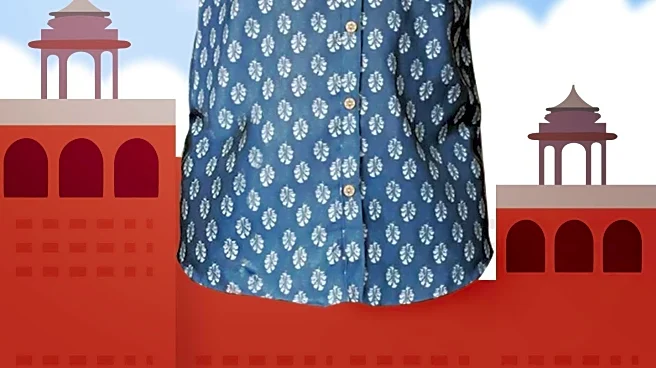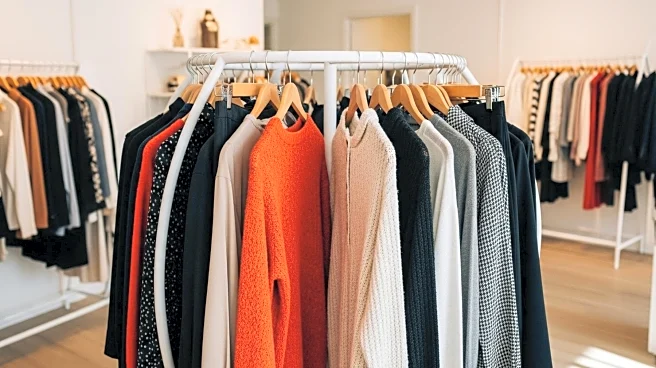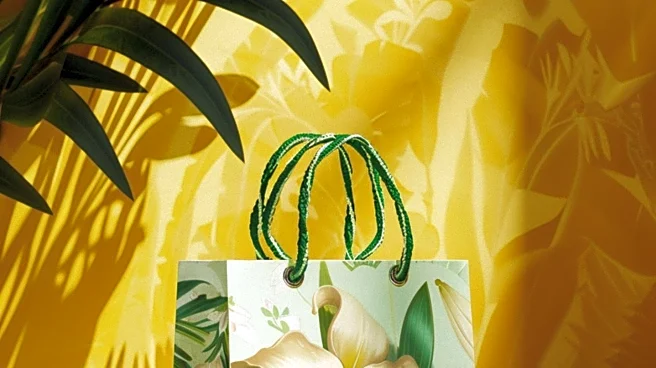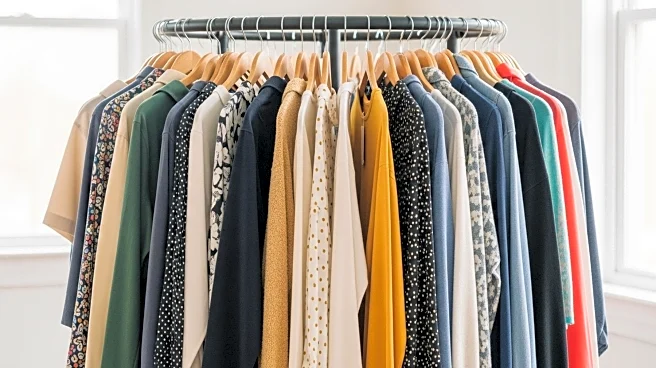What's Happening?
The secondhand fashion market is experiencing rapid growth, driven by shifts in consumer behavior and economic pressures. The global market for secondhand apparel is currently valued at $177 billion and is expected to double by 2027. In the U.S., the resale market is projected to reach $64 billion by 2024, growing 21 times faster than traditional retail. This growth is fueled by increased environmental consciousness, the desire for unique and affordable fashion, and the convenience of online shopping platforms. Gen Z consumers are particularly drawn to secondhand clothing, motivated by sustainability and financial constraints.
Why It's Important?
The expansion of the secondhand fashion market has significant implications for the fashion industry and consumer behavior. It offers a sustainable alternative to fast fashion, reducing waste and carbon emissions. The market's growth reflects a broader trend towards eco-friendly practices and conscious consumption. As consumers prioritize affordability and sustainability, businesses are adapting by integrating resale and rental models. This shift challenges traditional retail and fast fashion, potentially leading to more sustainable industry practices. The market's growth also highlights the role of social media and influencers in promoting sustainable fashion choices.
What's Next?
The secondhand fashion market is poised for continued growth, with major brands and platforms expanding their offerings. Companies like Depop, Vinted, and ThredUp are leading the charge, providing consumers with diverse options for buying and selling pre-owned clothing. As the market evolves, businesses may explore new models, such as buy-back programs and rental services, to meet consumer demand for sustainable fashion. The trend towards secondhand clothing is likely to influence broader industry practices, encouraging more brands to adopt eco-friendly initiatives and prioritize sustainability in their operations.
Beyond the Headlines
The rise of secondhand fashion reflects deeper cultural and societal shifts. It challenges the fast fashion model and promotes a more mindful approach to consumption. The trend supports cultural preservation by keeping vintage and unique garments in circulation. It also highlights the role of social media in shaping consumer behavior and promoting sustainable choices. As the market grows, it may influence broader societal attitudes towards consumption and sustainability, fostering a culture of resourcefulness and creativity. This shift could lead to long-term changes in consumer behavior and industry practices, promoting a more sustainable and equitable fashion landscape.










